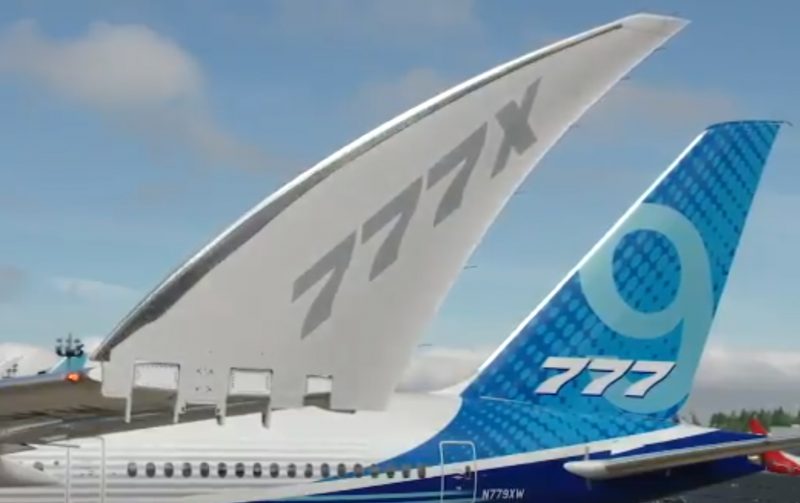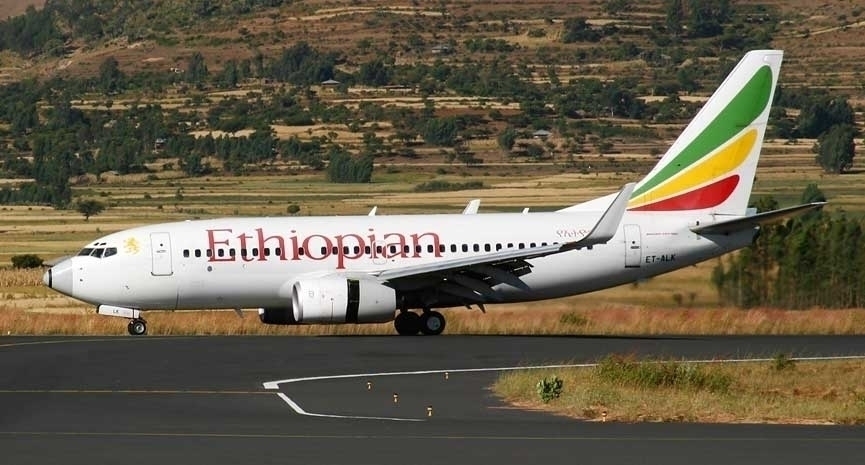The much-anticipated Boeing 777X should enroll into service with Lufthansa by early 2022. With so much drama surrounding the 777X program, one could think the plane has been around forever when, in actual sense, it has hardly taken off or even landed.
The new 777X program is shaping up as Boeing’s successor to the popular 777-300ER aircraft. However, it’s hardly 18 years since the first 777-300ER took to the skies.
Clearly, with the new advancement, there are going to be some modifications and differences. What differences await our eyes as the 777X takes to the air? Here are some of the modifications.
The easily recognizable difference between the 777X and the 777-300ER is the wingspan. Both 777X variants have a wingspan of 71.8 meters, roughly 15% bigger than the 777-300ER’s wingspan.

Because the wingspan is so huge, the wings’ actual ends need to fold upwards to allow the plane to use normal gates. This new wing design needed FAA approval as it is technically a new class of airplane. But these innovative wings will give the 777X greater lift and less drag.
This helps make 777X more fuel-efficient than the previous generation 777-300ER. Depending on who you ask, the 777X is 10-15% more fuel-efficient than the 777-300ER. That percentage may not sound like a lot, but every dollar counts in the cutthroat airline industry.
While the fuselage materials aren’t that different from the standard 777-300ER, the wings are almost completely made of composite materials not necessarily available two decades ago.
Early 2003, Boeing’s 777-300ER made its inaugural test flight and entered into service with Air France one year later. Over 800 of the aircraft have been sold, and it remains in production. The 777-300ER could fly about 20% further than the 777-300, explaining its ER tag.
The 777-300ER is just under 74 meters long. Its wingspan is just shy of 65 meters. It can fly between 365 and 550 passengers (depending on cabin configuration) up to 13,649 kilometers before needing to refuel. The plane has proved a big hit with airline customers needing a long-haul aircraft pitched between the smaller 787 Dreamliner and larger and now-defunct 747 jumbo.Meet Russia’s Air Force One: The Ilyushin Il
But the technology and design behind the 777-300ER is almost two decades old. There are two variants of the 777X available right now. Size-wise, there’s not a lot of difference between the 777X and the 777-300ER. The 777-8 is slightly smaller than the 777-300ER, and the 777-9 is slightly bigger. The main differences are in the design, technologies, and efficiencies. They are not things many passengers will necessarily note, but it’s something the airlines will.
The smaller of the 777Xs, the 777-8 is just under 70 meters long. In a modern two-class configuration, it can seat around 385 passengers. The plane has a range of 16,000 plus kilometers. The larger of the 777X, the 777-9 is nearly 77 meters long. Boeing says it can seat around 425 passengers across two cabin classes. Its range is around 13,500 kilometers, similar to the 777-300ER.
About Guide2Uganda
Guide2Uganda (www.guide2uganda.ug) is the most comprehensive source of information about Uganda that exists on the web, with more content on Uganda and surrounding towns, attractions, museums and galleries than any other online guide that currently exists for Uganda as well as being a dynamic news and comprehensive events driven site with content being added daily.
According to WeFollow & Peer Index (whom both measure online influence) we are among the most influential online media organizations in Uganda. We were also awarded for ‘’Best Destination Website in Uganda’’ by Jumia Travel Uganda in the 2017-2018 Africa Travel Awards. If you are planning a visit to Uganda you can always reach us on; info@guide2uganda.ug




